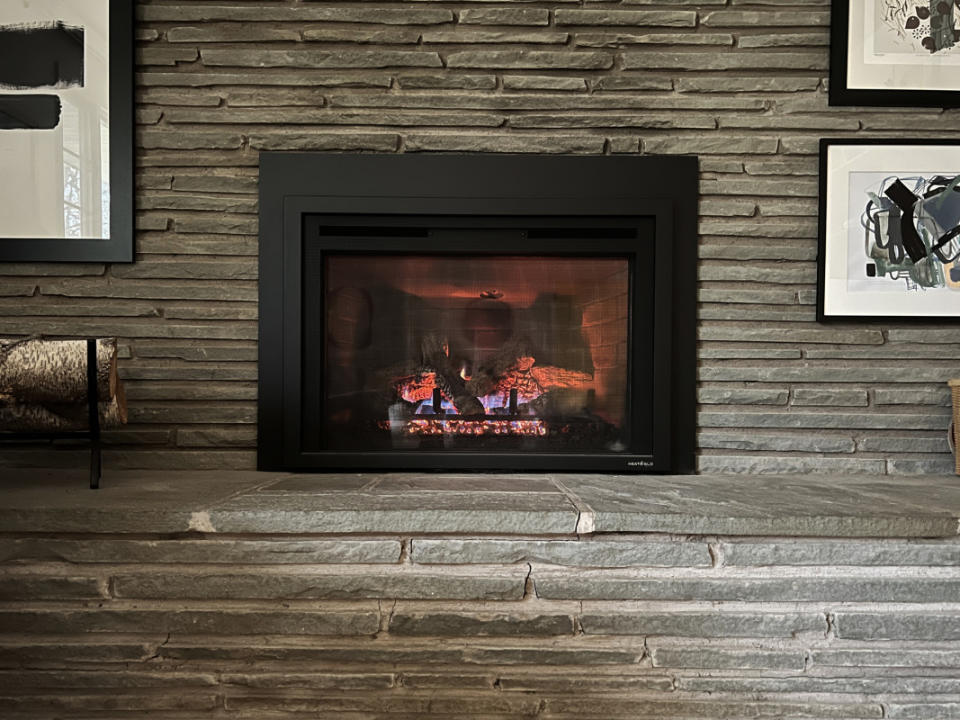How Much Does a Fireplace Insert Cost?
Fireplace inserts are a heating appliance that can be installed in an existing masonry fireplace. They improve heating efficiency by capturing and redirecting heat into the room and they are a great solution to a drafty or inefficient heat source. Fireplace inserts burn cleaner than a traditional wood fireplace and from an efficiency standpoint, they can be a great investment.
The cost of a fireplace insert can vary widely as there are dozens of add-ons, some practical, others preferential. But the unit's base cost will depend on which fuel option you choose: wood, gas, electric, or pellet.
Related: Is an Electric Fireplace More Efficient Than a Gas Fireplace?
Wood-Burning Fireplace Inserts
National Average: $2,200
Basic models may start around $1,000, while high-end options with installation and additional features can climb to $4,000 or more. Installation costs are additional and vary based on complexity.
Pros:
Lower Fuel Costs: Wood is often more cost-effective than gas or electricity.
Traditional: Wood-burning inserts maintain the ambiance of a real wood fire.
Reliable: Provide heat output even during a power outage.
Long-Term Savings: With a local and sustainable wood source, costs can be economical over time.
Cons:
Installation Costs: Installation can be expensive, especially if a chimney or venting system is not already in place.
Labor-Intensive: Requires effort to procure, store, and maintain wood.
Emissions and cleaning: Creosote buildup and particulate matter create air pollution, but it is much less than a traditional fireplace. Annual chimney cleanings by a professional are recommended.

Emily Fazio
Gas Fireplace Inserts
National average: $3,600
Prices typically range from $1,500 to $4,000 or more, excluding installation. Gas inserts require vent pipes on top of having varying features, such as remote control and programmable thermostats, which can influence the overall cost.
Pros:
Convenient Fuel Source: Both natural gas and propane are convenient and readily available fuel types.
Efficient Heating: Direct vent gas fireplace inserts are generally considered to offer the highest efficiency rating.
Flame pattern: The real flame offers a cozy visual aesthetic.
Cons:
Higher Initial Cost: Gas inserts can be more expensive upfront because you may need to connect or upgrade gas lines. Speak to your local technicians to learn how these extra expenses will affect your budget.
Dependence on Gas Supply: Requires a connection to a gas line, limiting placement options. If you have to buy a gas tank, the price ranges from $400 for an above-ground 100-gallon tank up to $4,500 for an underground 1000-gallon tank.
Lacks Ambience: Unless you opt for an added audio system, you won't have the crackling of a wood stove.

Photo by NATHAN MULLET on Unsplash
Electric Fireplace Inserts
National Average: $1,000
Basic electric inserts are the most cost-efficient and can start as low as $200, while more advanced and realistic models with additional features may climb to $2,000. Installation is usually straightforward, as these inserts often plug into standard electrical outlets.
Pros:
Low Initial Cost: Electric inserts are often more affordable upfront.
Easy Installation: Typically easy to install, often requiring only a standard electrical outlet.
Clean: The electrical power source is the greenest fireplace insert model available.
Cons:
Higher Operational Costs: To match the heat output of other styles, electric fireplace inserts may need to be run longer thus costing more over the long term compared to other fuel sources.
Visual Realism: While modern models mimic flames well, some may find the visuals less realistic than gas or wood-burning options.
Zone-heating: Most electric fireplace inserts will only adequately heat a 400-square-foot space.
Pellet Fireplace Inserts
National Average: $3,000
Pellet stove inserts can range from $1,500 to $4,000 or more. These stoves use a type of fuel made from compressed wood chips and sawdust, a byproduct that would otherwise end up in a landfill. The low moisture content of the wood pellets makes for an efficient energy source. Installation costs depend on factors such as venting requirements.
Pros:
Automated Fuel Feed: Pellet inserts often have automated feeding systems, making them more convenient than wood.
Better for Storage: Wood pellets take up less space than a cord of wood and require less labor to utilize.
Cost-Effective Heat Source: Even if pellets cost more than wood by the pound, operation costs will break even as pellets are such an energy efficient source.
Cons:
Electricity dependent: Most pellet fireplace inserts require electricity so in a power outage, you're out of luck.
Pellet Access: Pellets may have varying costs and availability depending on the region. It can be tricky to get stuck in a pellet fuel shortage.
Maintenance Needs: Pellet inserts require regular maintenance, adding to long-term costs.
